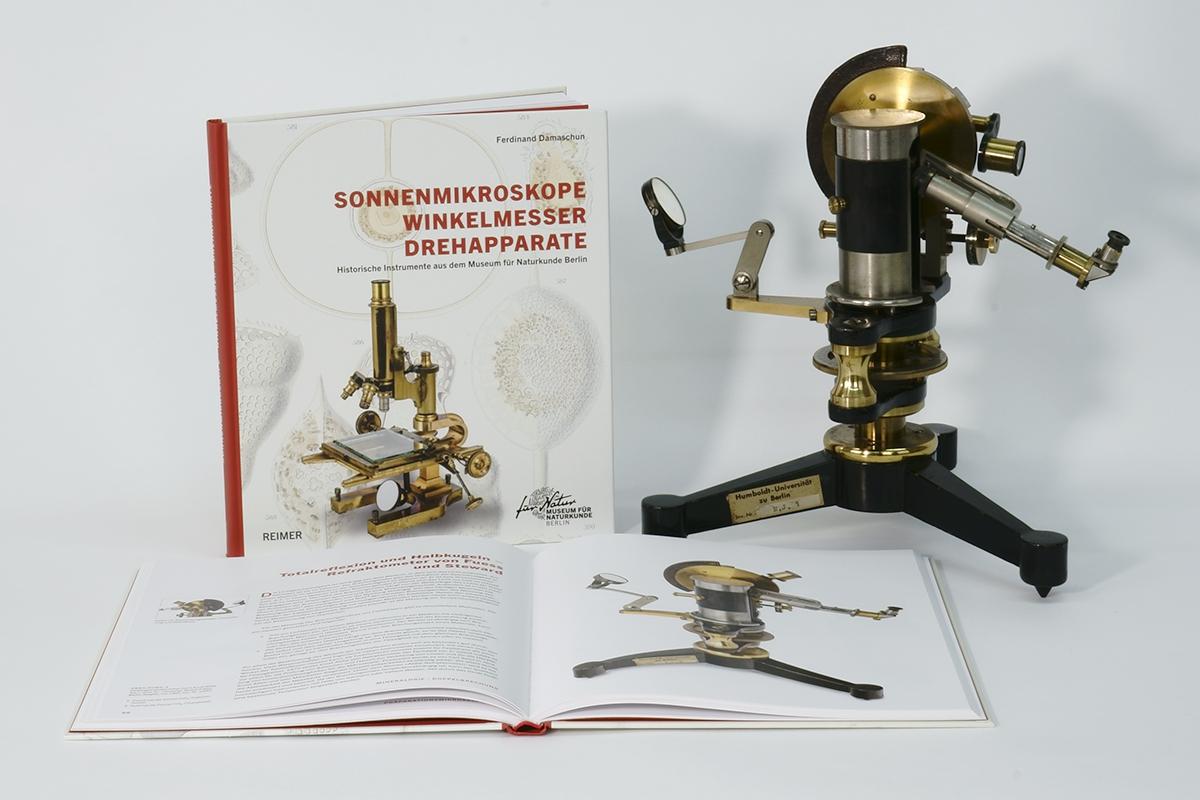Dietrich Reimer Verlag Berlin published a book about historical instruments at the Museum für Naturkunde Berlin in October. From the solar microscope to the computer tomograph - research and knowledge about nature was and is unthinkable without research infrastructures.
Scientific knowledge is unthinkable without measuring instruments and imaging processes. Optical instruments were already used in the museum's predecessor institutions in the 18th century; solar microscopes were used to project microscopic images for a wider audience. The use of simple drum microscopes led to the first microscopes with calculated optics and to today's complex imaging techniques such as computer tomography and electron microscopy. The museum runs its own laboratory for sequencing DNA. In mineralogy in particular, equipment was and is also used to measure crystals and determine their chemical composition. A wide variety of cameras have been used since the invention of photography to document results in the laboratory and during field investigations, as well as to image objects in the collection.
Some of the instruments used in the past have survived the passage of time. The oldest date from the 18th century; many from the 19th century. Some 100-year-old instruments are still in use today.
Now a richly illustrated book has been published. On 152 pages and with 134 partly full-page illustrations, 68 instruments from the collection of historical instruments are presented. The appendix contains an extensive bibliography, a list of persons and a compilation of all the manufacturers from whom the museum owns instruments.
The texts were written by Dr. Ferdinand Damaschun. He is a mineralogist and has been taking care of the old stock of scientific instruments in the museum for many years. He is the editor and author of several books on the history of the museum and its collections. The photos were taken by Hwa Ja Götz. She is a photographer at the Museum für Naturkunde Berlin and has already enriched several of the museum's books with her photographs; most recently the volume on the minerals and rocks that came to the museum via Alexander von Humboldt. The book was designed by Thomas Schmid-Dankward, graphic designer at the Museum für Naturkunde Berlin. Many books and catalogues from the museum bear his graphic signature.
